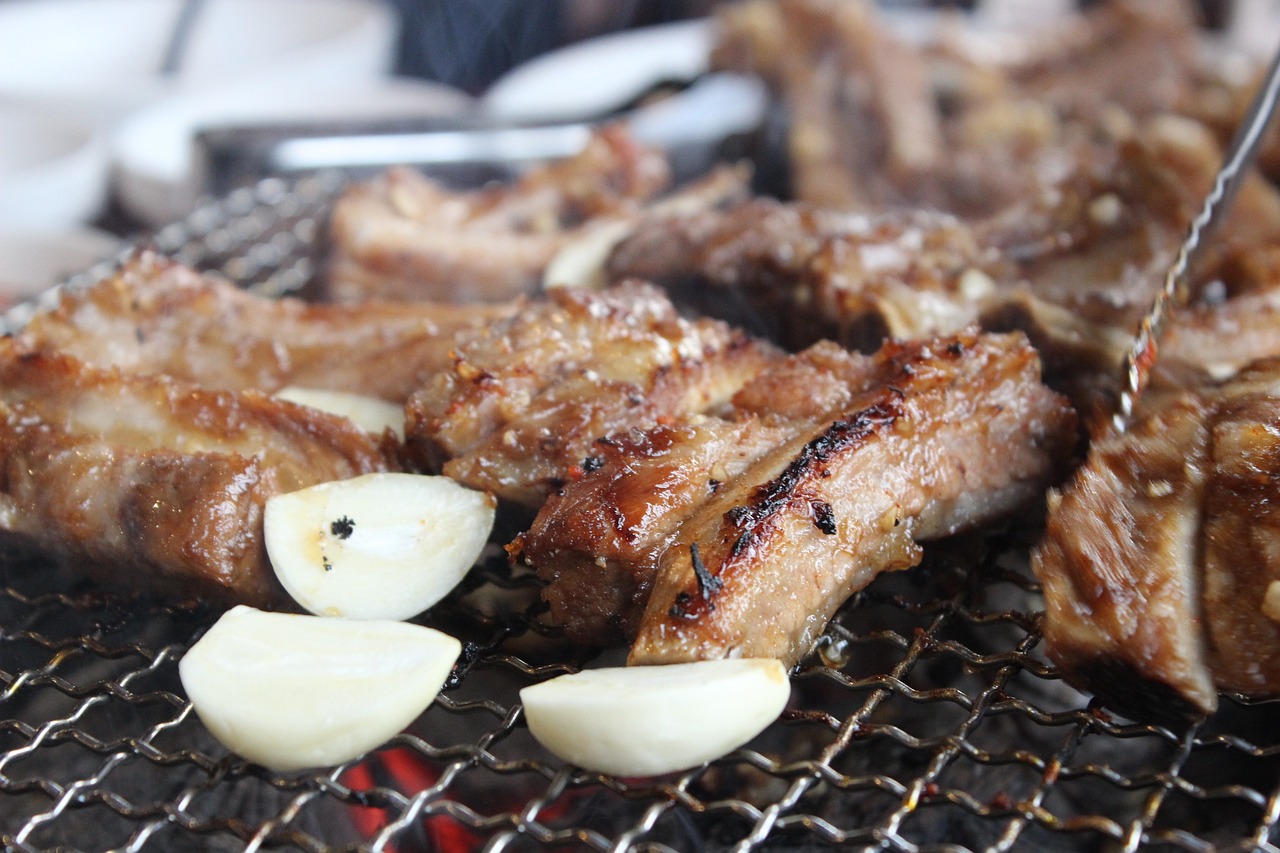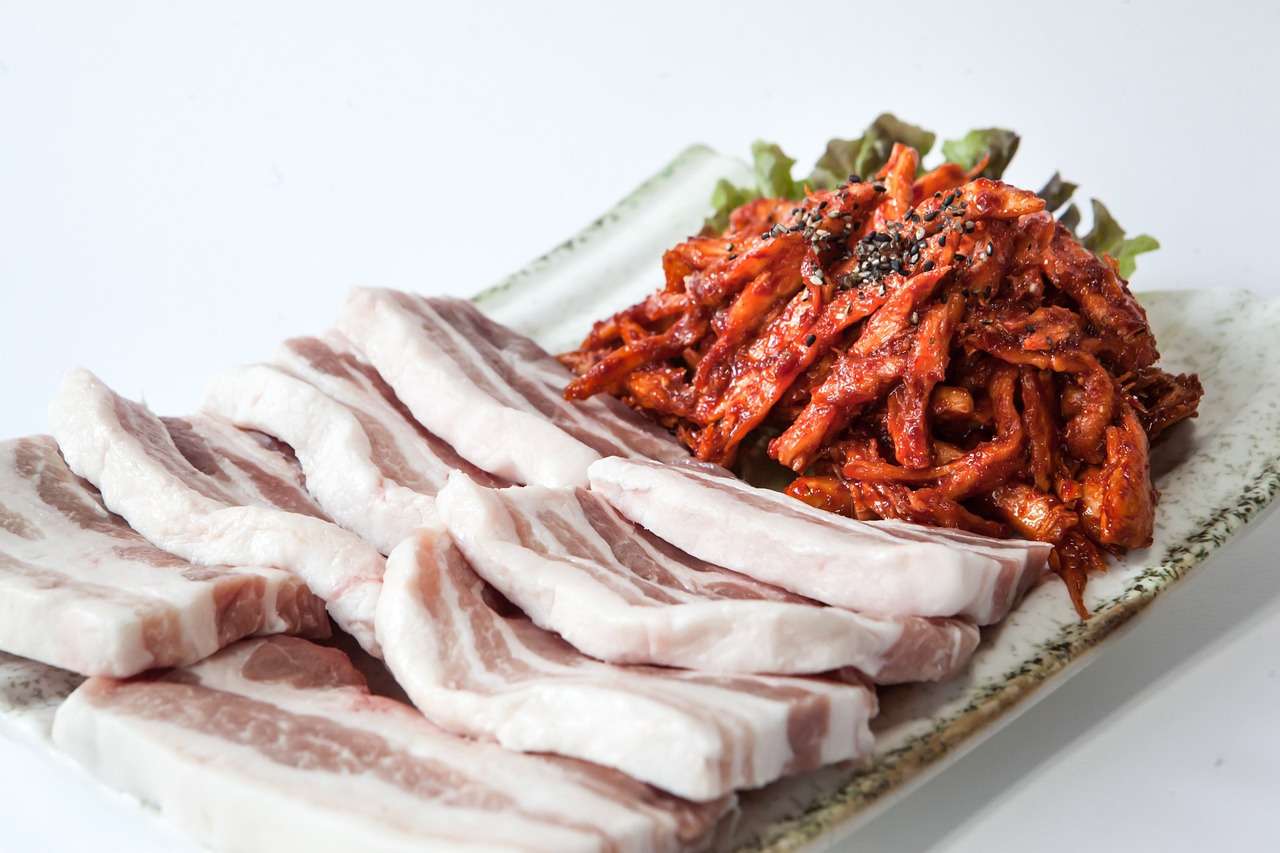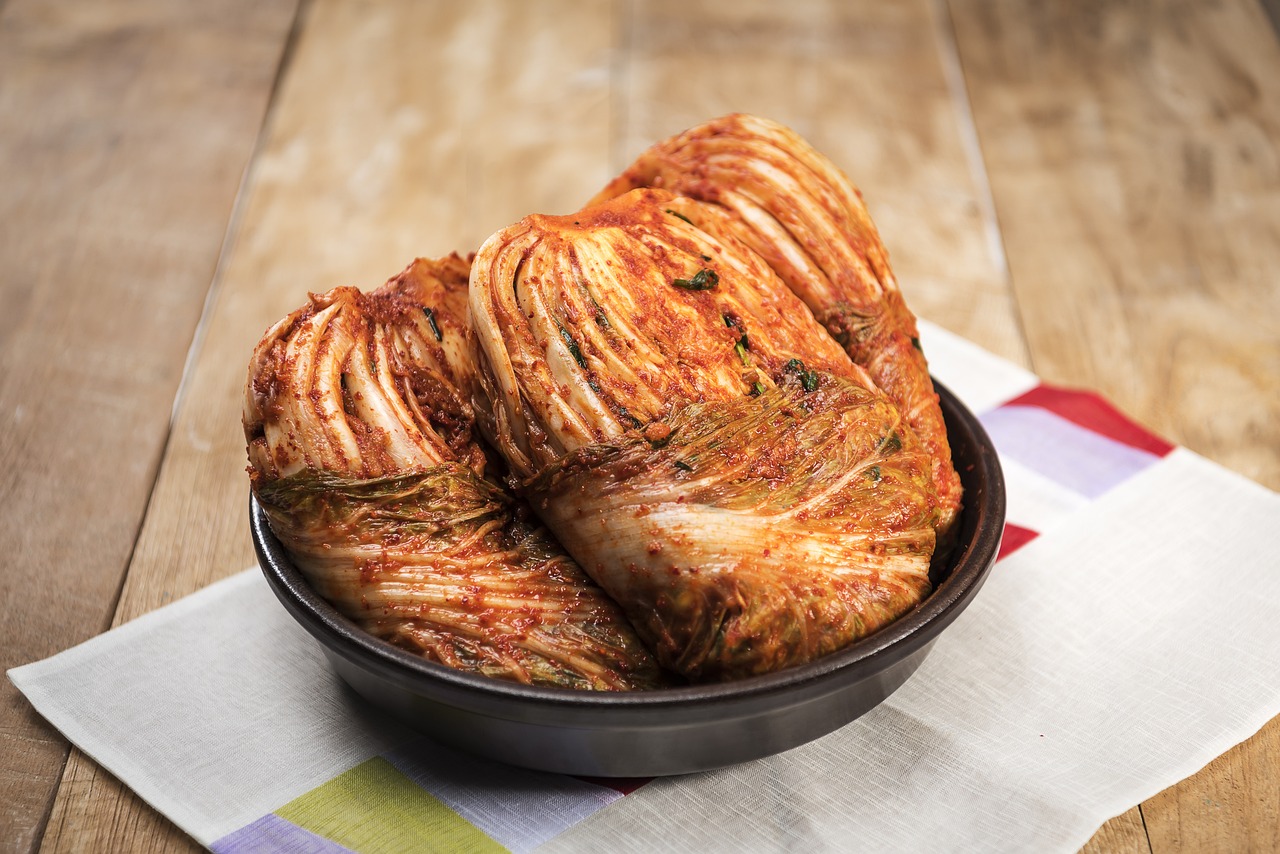Korean Bulgogi: Sweet and Savory Grilled Beef

Exploring the delicious world of Korean bulgogi, a popular dish featuring thinly sliced beef marinated in a sweet and savory sauce before being grilled to perfection.
The journey into the realm of Korean bulgogi is a tantalizing experience that combines the sweetness of the marinade with the savory juiciness of the grilled beef. The explosion of flavors in every bite is like a surprise party for your taste buds, leaving you craving for more.
Imagine tender slices of beef, infused with a marinade that balances soy sauce's umami richness, the subtle sweetness of sugar, the nutty aroma of sesame oil, and the unexpected touch of pear for tenderness. Each ingredient plays a crucial role in creating the symphony of flavors that define bulgogi.
As the beef sizzles on the grill, the aroma of caramelization fills the air, promising a delightful feast ahead. The anticipation builds as the meat cooks to perfection, ready to deliver a burst of flavors with every bite.
Whether you choose to grill, pan-fry, or broil your bulgogi, the goal remains the same - to achieve that perfect balance of caramelization on the outside while keeping the meat juicy and tender on the inside. It's a delicate dance of heat and timing that transforms simple ingredients into a culinary masterpiece.
When it's time to serve your bulgogi, the traditional Korean way is to present it with an array of accompaniments. From steamed rice to crisp lettuce wraps and tangy kimchi, each element adds depth to the dining experience. Pair your meal with a refreshing glass of soju or a soothing cup of green tea for a complete sensory journey.
History of Bulgogi
The history of bulgogi dates back centuries, originating in Korea as a way to preserve and flavor meat. The name "bulgogi" itself reflects the traditional method of preparation, with "bul" meaning fire and "gogi" referring to meat. This dish has evolved over time, becoming a staple in Korean cuisine and gaining popularity worldwide for its delicious blend of sweet and savory flavors.
Historically, bulgogi was considered a special dish reserved for royalty and aristocrats due to the quality of the ingredients and the intricate preparation process. However, as Korea modernized and food became more accessible, bulgogi transitioned into a beloved comfort food enjoyed by people from all walks of life.
The cultural significance of bulgogi extends beyond its culinary appeal. It is often served during festive occasions and family gatherings, symbolizing unity and celebration. The act of sharing a meal of bulgogi with loved ones fosters a sense of community and togetherness, making it more than just a dish but a symbol of warmth and hospitality.
Ingredients and Marinade
When it comes to creating the perfect bulgogi marinade, the key lies in the selection of ingredients that work together harmoniously to enhance the flavor of the beef. The traditional bulgogi marinade consists of a combination of soy sauce, sugar, sesame oil, and pear, each playing a crucial role in imparting the characteristic sweet, savory, and umami profile to the dish.
Soy sauce serves as the base of the marinade, providing a salty and savory undertone that balances the sweetness of the other ingredients. It also helps tenderize the beef slices, ensuring they remain juicy and flavorful during cooking.
Sugar brings a touch of sweetness to the marinade, caramelizing the beef when grilled and adding a delightful contrast of flavors. Whether using brown sugar, honey, or another sweetener, the right amount is essential to achieve the perfect balance of flavors.
Sesame oil contributes a nutty aroma and richness to the marinade, enhancing the overall depth of flavor. Its distinctive taste is a hallmark of Korean cuisine and plays a significant role in elevating the taste of bulgogi.
One unique ingredient often found in bulgogi marinades is pear, which acts as a natural tenderizer due to its enzymes. The pear not only helps break down the proteins in the beef, resulting in a more tender texture, but also imparts a subtle sweetness that complements the other flavors in the marinade.
Additionally, variations of the bulgogi marinade may include ingredients like garlic, ginger, green onions, black pepper, and rice wine, adding complexity and depth to the overall taste profile. Experimenting with different combinations of these ingredients allows for a personalized touch to this beloved Korean dish.
Cooking Techniques
When it comes to cooking Korean bulgogi, there are various techniques you can use to achieve that perfect balance of flavors and textures. Let's dive into the different methods that can help you create a mouthwatering bulgogi dish:
- Grilling: Grilling is one of the most popular ways to cook bulgogi. The direct heat helps caramelize the marinade, giving the beef a delicious smoky flavor. Make sure to grill the thinly sliced beef quickly over high heat to maintain its juiciness.
- Pan-frying: Pan-frying is another common technique for cooking bulgogi. Heat a skillet or a non-stick pan over medium-high heat and cook the marinated beef slices until they are caramelized and cooked through. This method is great for those without access to a grill.
- Broiling: If you prefer an oven method, broiling can also produce fantastic bulgogi. Place the marinated beef on a broiler pan and cook under the broiler for a few minutes on each side until the beef is cooked to your desired doneness. Keep a close eye to prevent burning.
Each cooking technique brings its own unique touch to the bulgogi, so feel free to experiment with different methods to find your favorite way of preparing this delectable dish. Whether you prefer the charred edges from grilling or the caramelization from pan-frying, the key is to cook the beef just right to unleash the explosion of flavors in every bite.
Serving and Pairing
When it comes to serving and pairing Korean bulgogi, there are several key components to consider in order to create a truly delightful dining experience. Let's dive into the traditional ways of serving this delectable dish and the perfect pairings to elevate its flavors.
First and foremost, bulgogi is typically served with a variety of accompaniments that complement its sweet and savory profile. One popular way to enjoy bulgogi is by wrapping the grilled beef slices in fresh, crisp lettuce leaves. This adds a satisfying crunch to each bite and offers a refreshing contrast to the rich flavors of the meat.
Additionally, serving bulgogi with steamed white rice is a common practice that helps balance out the bold flavors of the dish. The fluffy texture of the rice serves as a neutral base that allows the marinade-infused beef to shine, creating a harmonious combination of tastes and textures.
For those looking to add a bit of heat to their bulgogi experience, kimchi is a classic side dish that pairs exceptionally well with the grilled beef. The spicy and tangy flavors of kimchi provide a zesty kick that cuts through the richness of the meat, creating a dynamic flavor contrast that keeps your taste buds tingling.
When it comes to beverages, there are several options that can enhance the overall dining experience of enjoying bulgogi. Soju, a popular Korean alcoholic beverage, is often served alongside bulgogi to add a celebratory touch to the meal. Its clean and crisp taste complements the flavors of the dish and is perfect for toasting to good food and good company.
For those looking for a non-alcoholic option, green tea is an excellent choice to pair with bulgogi. The light and earthy notes of green tea act as a palate cleanser between bites, allowing you to fully appreciate the complexity of flavors in each mouthful of the marinated beef.
In conclusion, serving and pairing Korean bulgogi is an art form that involves combining the right elements to create a harmonious and satisfying meal. By following traditional serving practices and choosing the perfect accompaniments and beverages, you can elevate your bulgogi experience to new heights of flavor and enjoyment.



 HazalVardal
HazalVardal 





